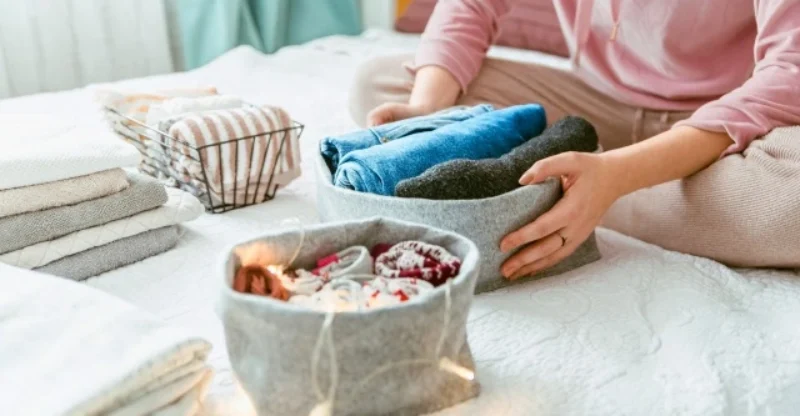7 Golden Rules for Decluttering: Expert Tips for an Organize Home
Do you have your kids’ room looking like something the tornado blew through and don’t know where to begin re-arranging from?
Are you tired of unused stuff lying around your home and taking up space?
Do you wish to shop for new items but don’t know what to trash or donate to the thrift store?
Well, you’ve come to the right space for answers as this article will answer all questions about decluttering your home.
Read through until the end and learn about the seven golden rules for decluttering your home.
Rule 1. Prepare to Declutter and Organize
The first rule about getting an organized home is to make up your mind to declutter. Just like everything in life, our decision matters a lot.
Think of organizing your space as a way of going to the grocery shop; if it’s not part of your to-do list, you won’t find yourself going there.
Decluttering comes with a lot of hassle. It’s like learning to ride a bike for the first time; you’ll easily quit if it isn’t a priority for you in the first place.
Rule 2. Develop a Plan
Starting a decluttering journey is synonymous with going on a trip without an itinerary; of course, commotion won’t be too far away from such. Develop a working system to itemize what you want to achieve at the end of the decluttering.
Without a plan, you’ll have yourself trying to work through arrangements amidst letting go of clutter; although that may not be entirely impossible, it’ll only make you weary and overwhelmed sooner than it should.
Sort of picture the final look of your home before you even begin. That will give you a better understanding of the space you want to declutter and the stuff that needs rearranging.
That said, use these steps as your checklist;
- Start with one room at a time
- Get the right set of containers for storage
- Separate the items for donation, trashing, and storage
Rule 3. Don’t Push Perfection
You don’t have to break the bank to rearrange your home. If you don’t have the means to replace old stuff with new ones, no big deal; get the old ones out of the way and rearrange every other thing.
The whole idea of setting aside clutters and making your home presentable doesn’t necessarily equate to shopping for new stuff or hiring an influential interior designer, it’s simply about making your space and keeping it simple.
Now, I’m not saying if you have the finances, you can’t do that; just act within your limits, Okay?
Rule 4. Think of It as a Maintenance Journey and Not a Project
If you see organizing your home as a project rather than a maintenance journey, you’ll get bored out too soon. Decluttering should be something you do for fun, just like deciding to upgrade your skincare or better still hair growth.
Looking at it that way will not only add excitement to the process but also help you craft out better ways to ensure that you achieve the result.
Furthermore, letting go of clutter in your home shouldn’t be a one-time thing. It should be something you do regularly, especially when you get bored with the last arrangement.
The fact that we always find ourselves shopping for new things will make decluttering a continuous process as we’ll always find stuff we want to give away or haven’t been using for a long time.
Rule 5. Put Things to Use Together in the Same Place
The best way to have things arranged is to organize similar stuff in the same place. It makes no sense to keep your shampoo far from the cabinet where your conditioner is at or to keep your baking pan hanging on the wall while the rolling pins are hidden elsewhere.
The point here is, to develop the habit of itemizing similar stuff together. That doesn’t just give you the ease of locating them but also adds to the aesthetics of your home.
Do me a favor, will you? picture similar stuff lying away from each other and picture them arranged together in one place; which makes sense?
Rule 6. Put Heavy Things on Lower Shelves
Putting stuff on higher shelves will do no good but place the shelves at risk of collapsing and worst case, damaging the item itself.
It makes sense to place heavy objects at lower levels where you can both reach them easily and return it back.
If you keep a heavy item where you can’t reach it, you’ll feel discouraged whenever you want to use it, reducing the number of times you use it, thereby putting it at a bigger risk of becoming clutter. When that circle continues, the number of unused items in your home increases.
Rule 7. Put Stuff Where You Look for It
This has to be my favorite out of all the golden tips we’ve talked about; placing stuff where you first look for them.
If the first place I go to is my bathroom cabinet every time I’m looking for, say, my hairbrush, then, it makes no sense for me to rearrange and put the hairbrush in the bedroom cabinet.
The latter may seem like the most logical and reasonable place to put it but that isn’t where my brain would recognize the thought of ‘hairbrush,’ so why stress it?
Moving on, all the tips illustrated above are to help you declutter your home and place stuff back to where it should be.
Bonus Rules: Practice the Four Basic Principles of Decluttering
These four laws will further help you understand items that need to be trashed out, donated, or boxed away for possible future use;
1. 12/12/12 Principle
This states to “find 12 items to discard, 12 items for donation, and 12 items to return to their proper place.”
2. 5-Second Principle
If you find it hard to remember an item within 5 seconds, then that item is a clutter.
3. 80/20 Principle
This principle tells you to either store or discard 80% of the stuff you no longer use regularly.
4. 20/20 Principle
Although this one is dicey, it says to throw away whatever you can replace within 20 minutes and it’s not worth more than $20.
FAQS
Decluttering your space isn’t a one-time thing but a continuous process. That said, the most important thing is ensuring that with every new stuff you buy, take out the old stuff.
Yes, you should. If you don’t, your home will be filled with lots of items that aren’t in use, and that will affect its overall aesthetics.
Your clutters can be sent to thrift stores or orphanage homes as donations, put out for sale or simply trashed out. However, before their final destination, you can put them in your car or just sitting by the front door.



